The PIC camera was on my list of cameras to review just before I returned to work after the two years lost years of COVID-19. Recently, when I looked up from my desk and saw the odd and unusual camera, I wanted to put a film into the camera, run it through its paces, and do a blog post on it. The main thing that caught my eye was the shape and size of the camera. You don’t come across many round cameras with a straightforward design.
I am trying to remember where the PIC camera came from, as I’ve owned it for five to six years. Like many of the other cameras I write about, the PIC camera was included in a group or “lot” of cameras purchased. I do remember when I received it; my first thought was that it was a “toy” camera, which I own many of.
The more I examined the camera, the more I realized it was not a serious camera. It does not have the ability to set shutter speeds, aperture settings, or even focus at a specific distance. It’s just a simple point-and-shoot camera made for quick snapshots, a camera you can keep in your pocket for when you travel on holidays or visit friends and family.
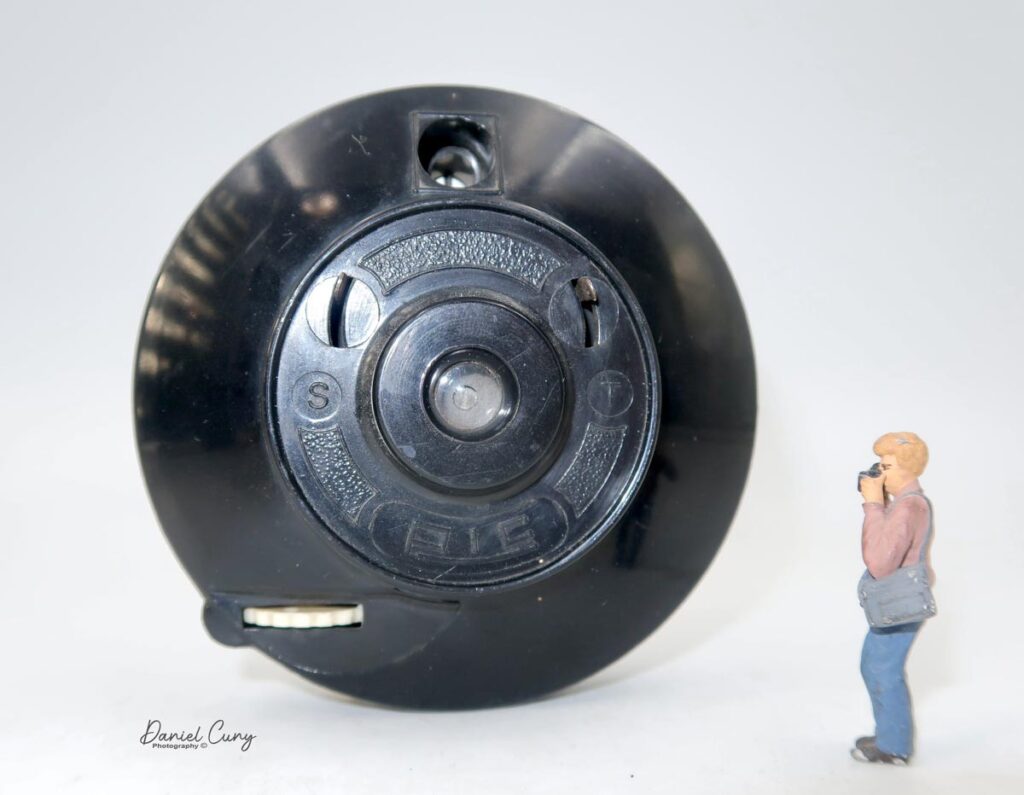
The Company
From what I can see online, the PIC camera is another camera with very little information regarding the manufacturer. There’s conflicting information about the camera and who and when it was made. Some of the information I found states the camera was made in England sometime in the early 1950s by a company named Pressure Sealed Plastics Ltd. and distributed by Pic Distributors Limited.
When I looked up information about Pressure Sealed Plastics Ltd., Initially a London-based company. It states the company existed from 1955 to when it was purchased in 1966. It was transferred from Peckham to Chesterfield in May 1970. Some online information also states that the company was not in London but in Southend on Sea. I’ll leave it someplace in England.
In 1986, the organization was divided into two trading operations: Consumer Products and Industrial Products. The former was responsible for waterbeds. The latter took over the remaining operations and manufactured Rompa products, waterbeds, etc.
From the information I found and posted above, I have no idea where the idea or manufacturing of the PIC camera came from. If you have other information on the camera, who designed it, or the company that made it, please let me know, and I’ll change the information in the post.
The Camera
The PIC camera is a round camera that measures 3 3/4″ in diameter, is 1 7/8″ deep, and weighs 3.7 oz. with a fixed focus meniscus lens. The camera has a slight convex shape on the back along with the front, but halfway into the convex shape on the front, there are two tiers of flat surface where the shutter and lens are placed. The side view of the camera resembles a spaceship or UFO.
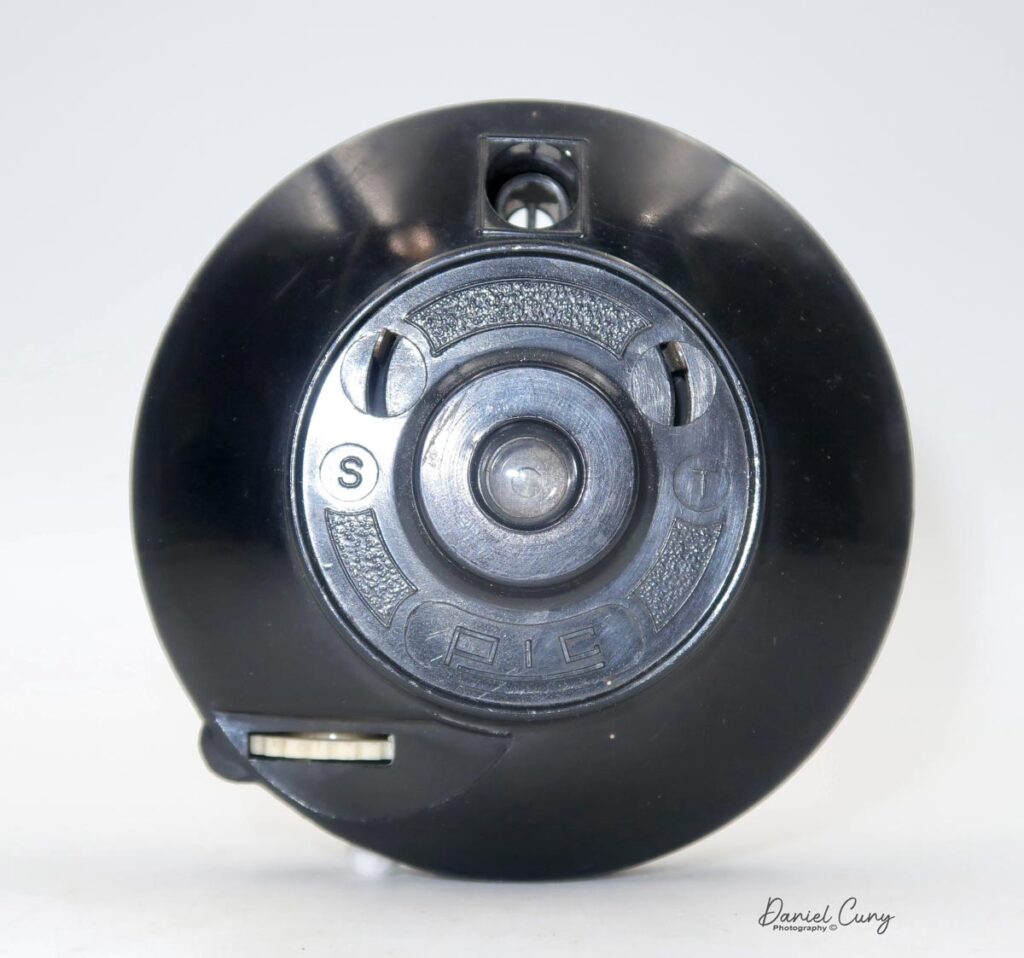
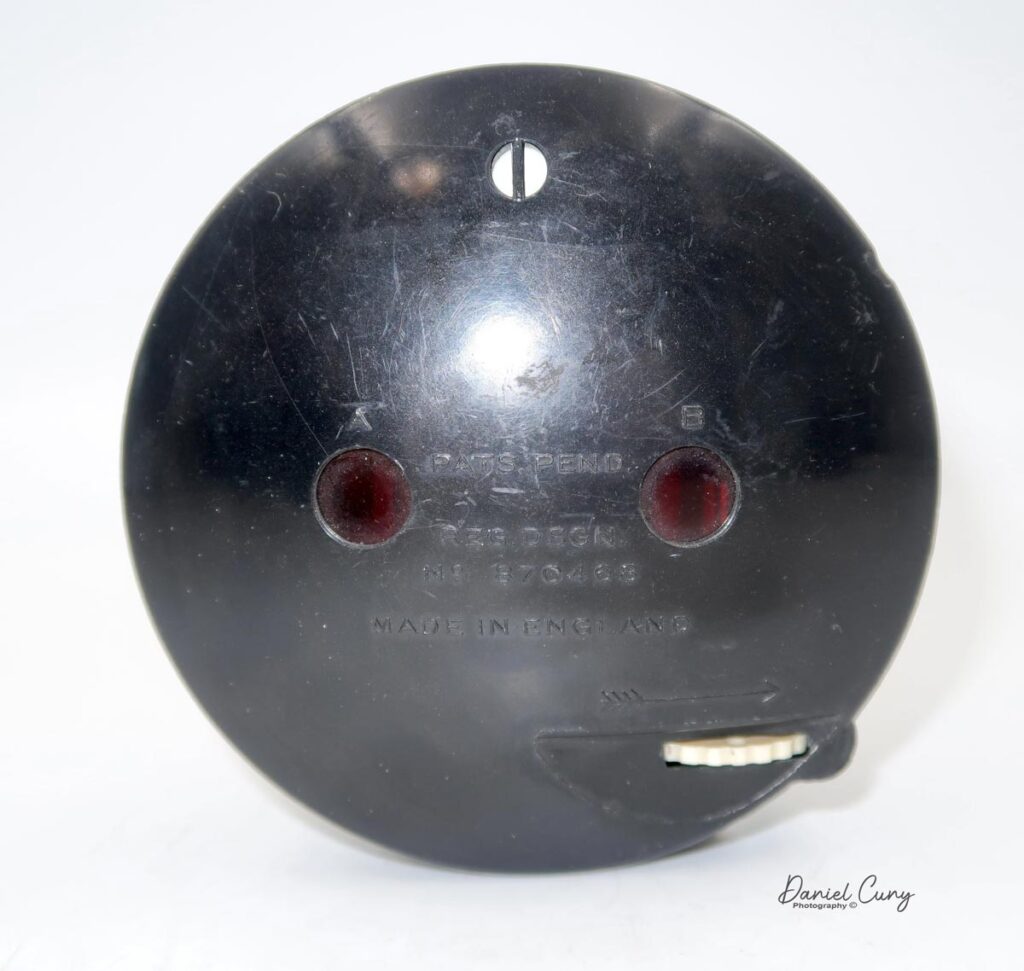
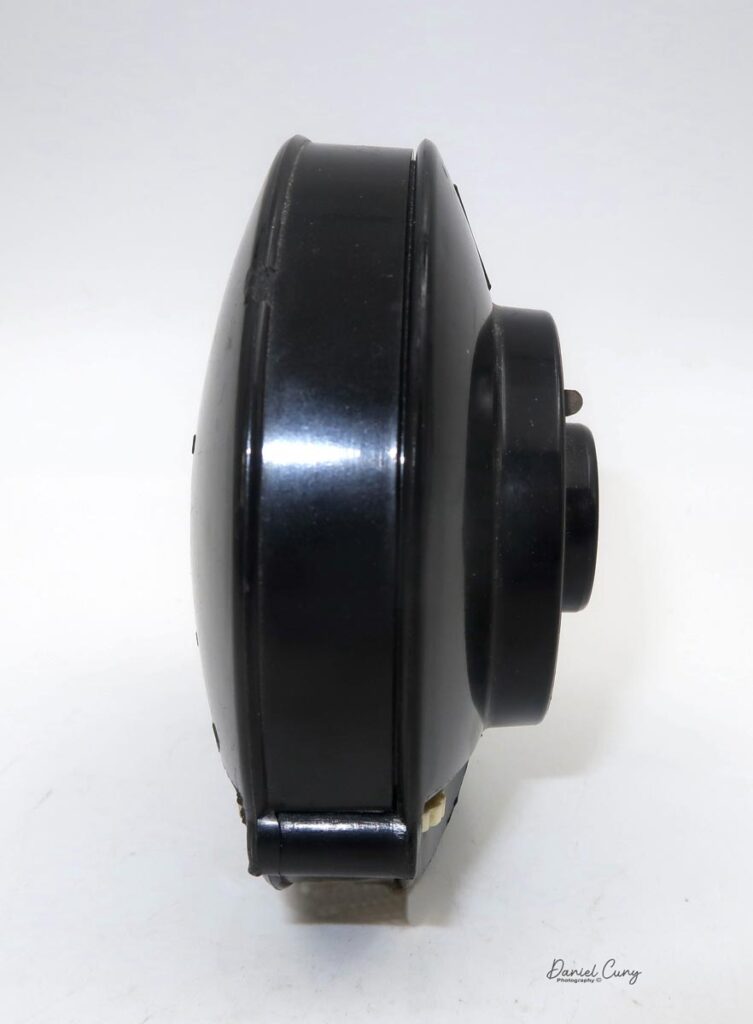
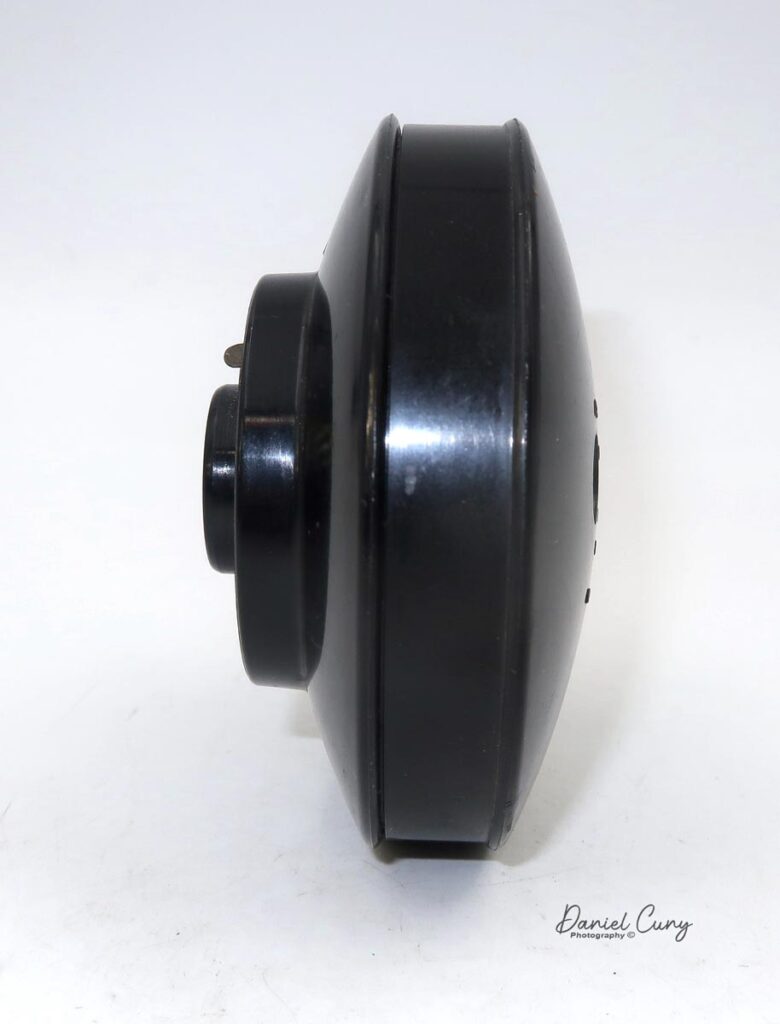
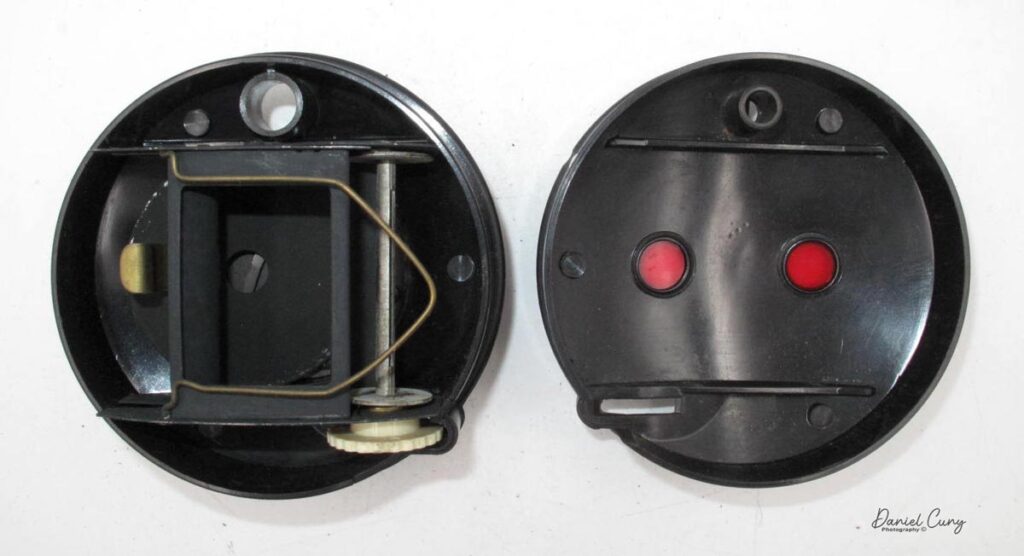
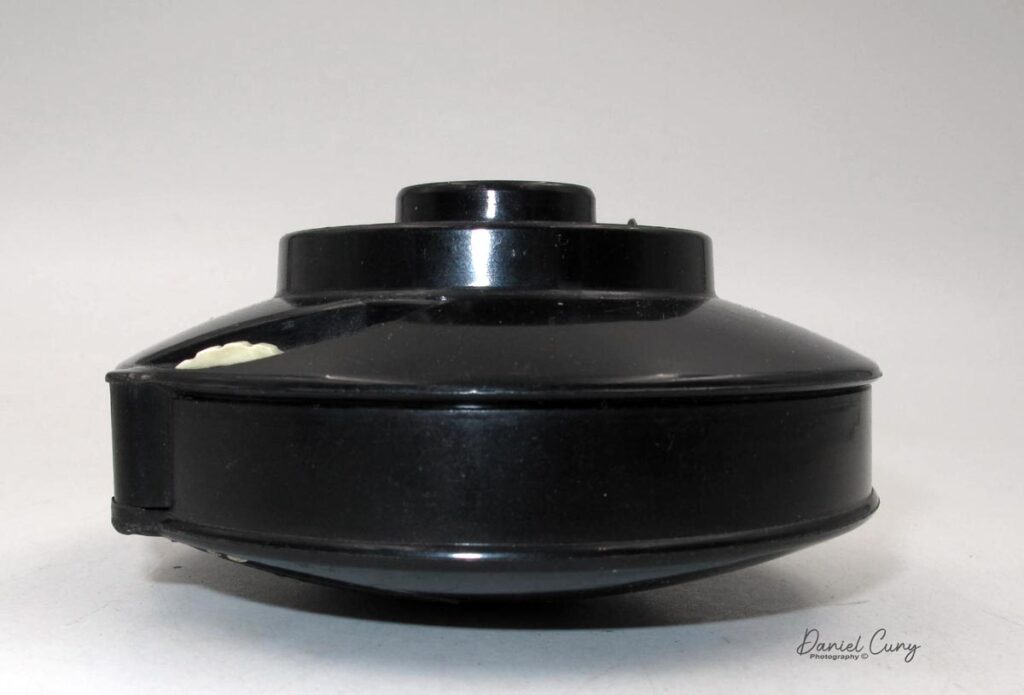
To open the PIC camera to load the film, there is no latch or hinge to open the back of the camera, but you slide the front of the camera from the back of the camera and pull it off. My guess is this is where the “Pressure Sealed Plastic” comes from, as it’s held together by a tightly fitting front that fits onto the rear of the camera.
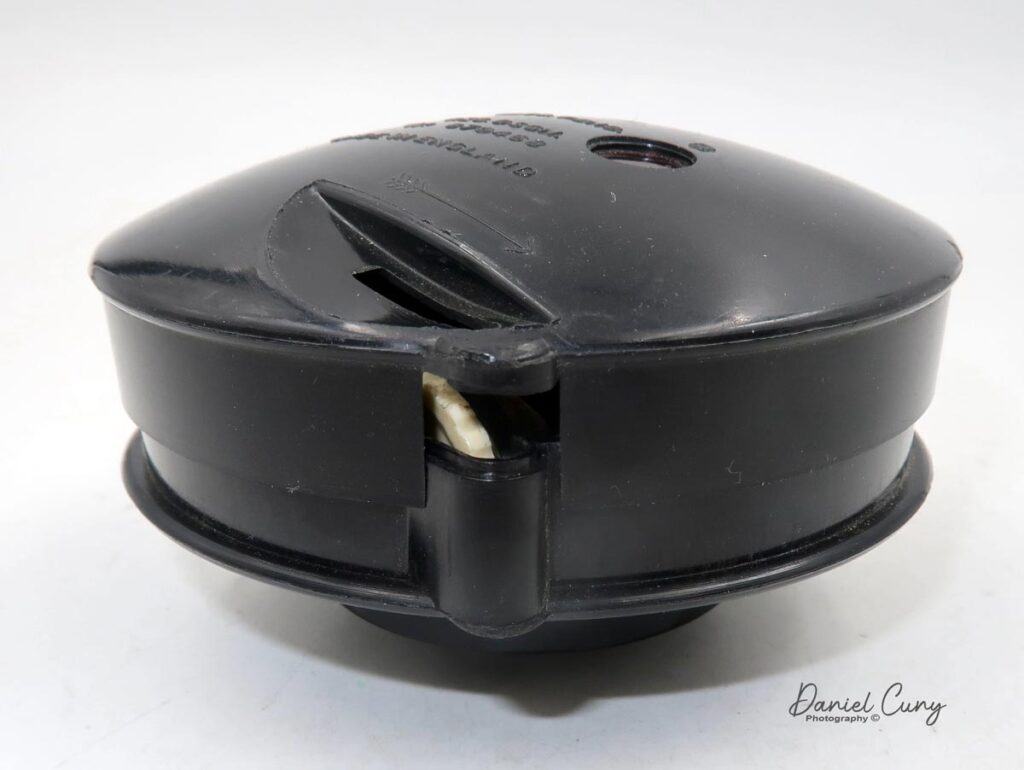
The rear of the camera has nothing other than two red windows that tell you the frame number you’re on when advancing the film. On the outside of the back of the camera is written, Pats. Pend. Reg Dsgn No. 870468, Made in England. On the bottom right of the back of the camera is a slot where the film advance wheel fits.
In front of the camera, you load the film via an insert that fits into that area. The insert is a place to put the take-up spoon on the right and a new roll of film on the left. There’s an opening for the negative, which measures 1 3/8″ wide by 1 7/16″, the exposed image size on the negative. A hinged wire acts as a pressure plate to keep the film flat when loaded into the camera. The insert is removable to make loading and unloading the film more accessible.
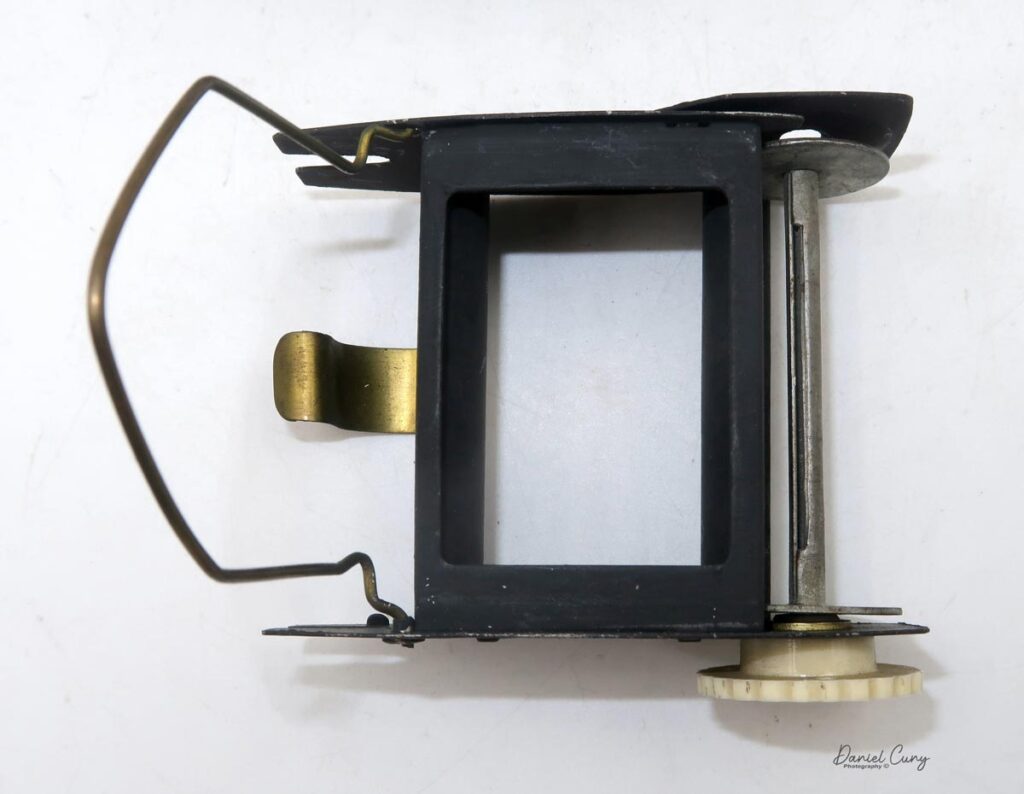
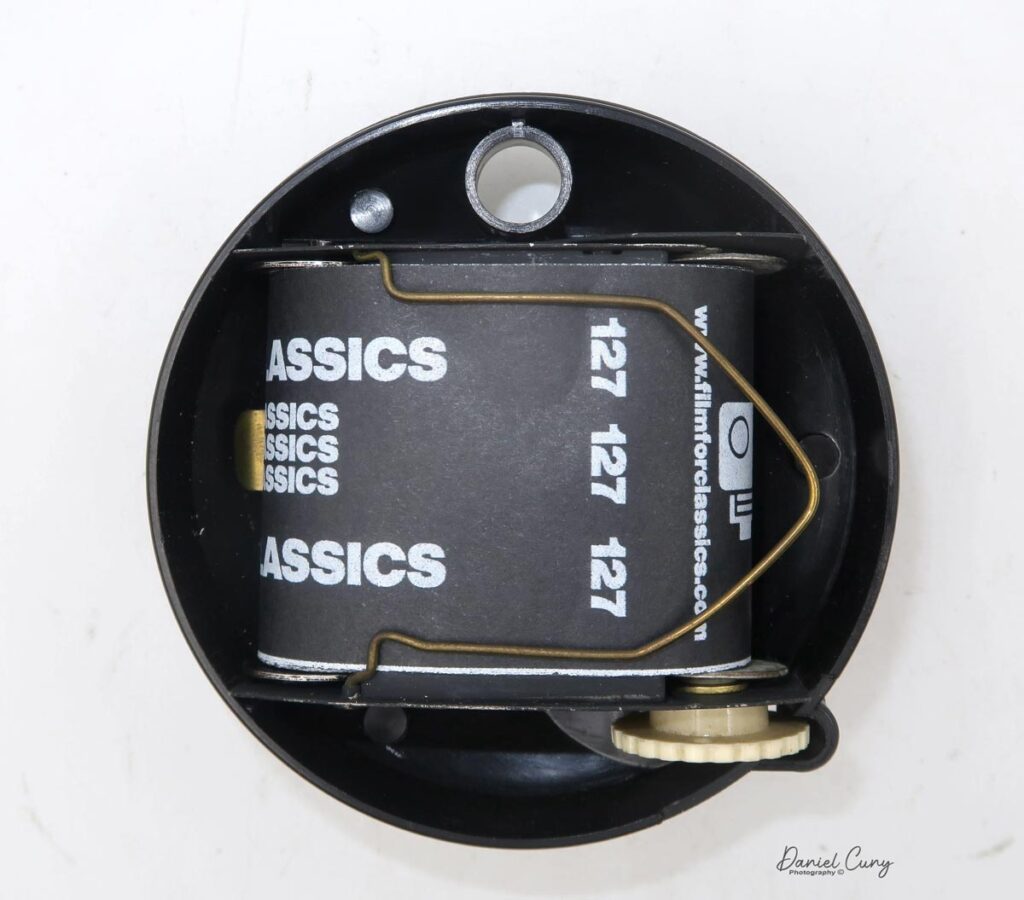
Underneath the film insert is a metal disc that covers the shutter assembly. When I received the camera, the shutter wasn’t working, and I didn’t notice that the metal disc covering the shutter assembly wasn’t in its correct place. When I decided to write a post on this camera, I wanted to see if I could get the shutter working. This assembly is elementary and something even the non-mechanical person I am could get working again. I popped off the disc, and the shutter has two different levers corresponding to the levers on the front of the camera. My guess is that there is a shutter lever for “T” or timed exposures and another lever, “S,” for snap. Generally the second shutter setting is “I” for instant, but this one is different.
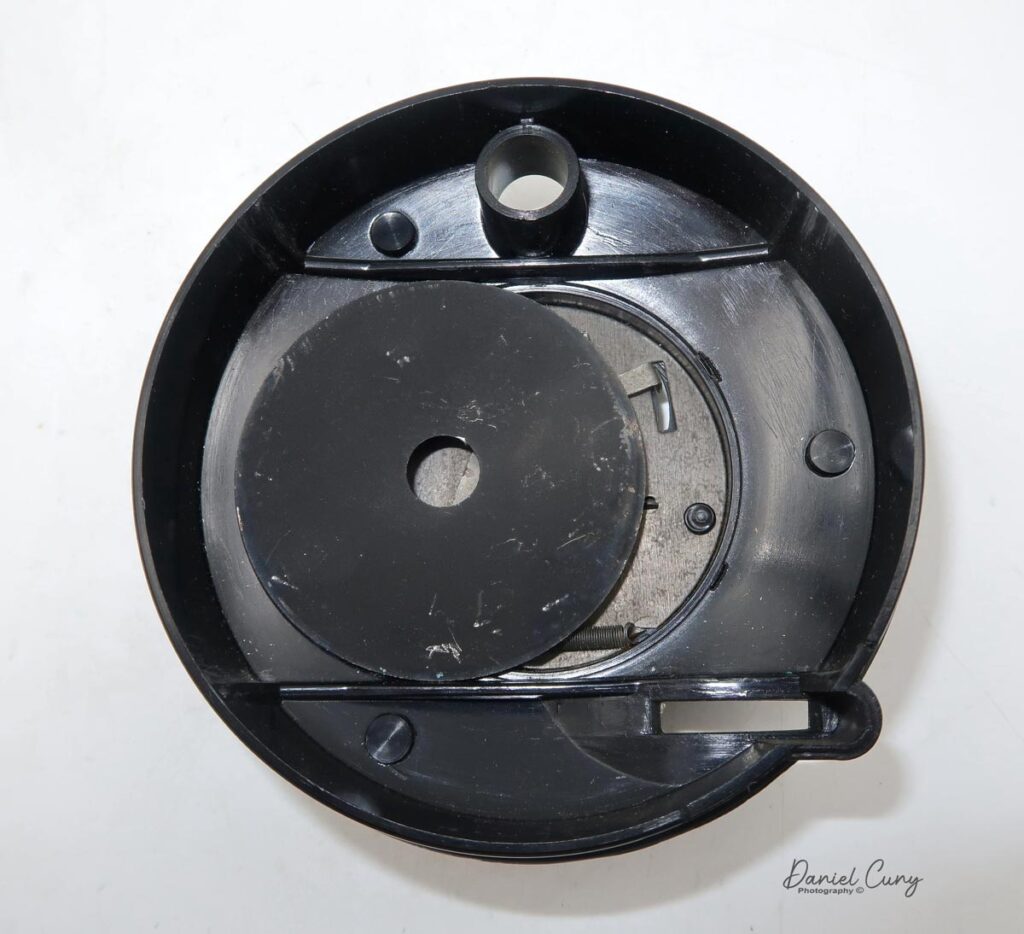
In the middle, there is a disc on the end of a piece of thin aluminum with a hinged rivet on the bottom that has the shape of an open safety pin, but the pin part is short, so it doesn’t fit into the safety part. A spring holds the lens cover assembly in the closed position. Above the lens cover are your shutter levers, which also have hinged rivets, with a more extended metal arm that is bowed in the middle to fit over the lens covering disc, and on the bottom of the arm is a slight bend that allows the arm to interact with the shutter cover assembly. On the left of the shutter cover is a lever for the “T” shutter release for timed, and on the right is “S” for snap. A spring is between these two shutter assemblies to hold the arms away from the lens cover assembly.
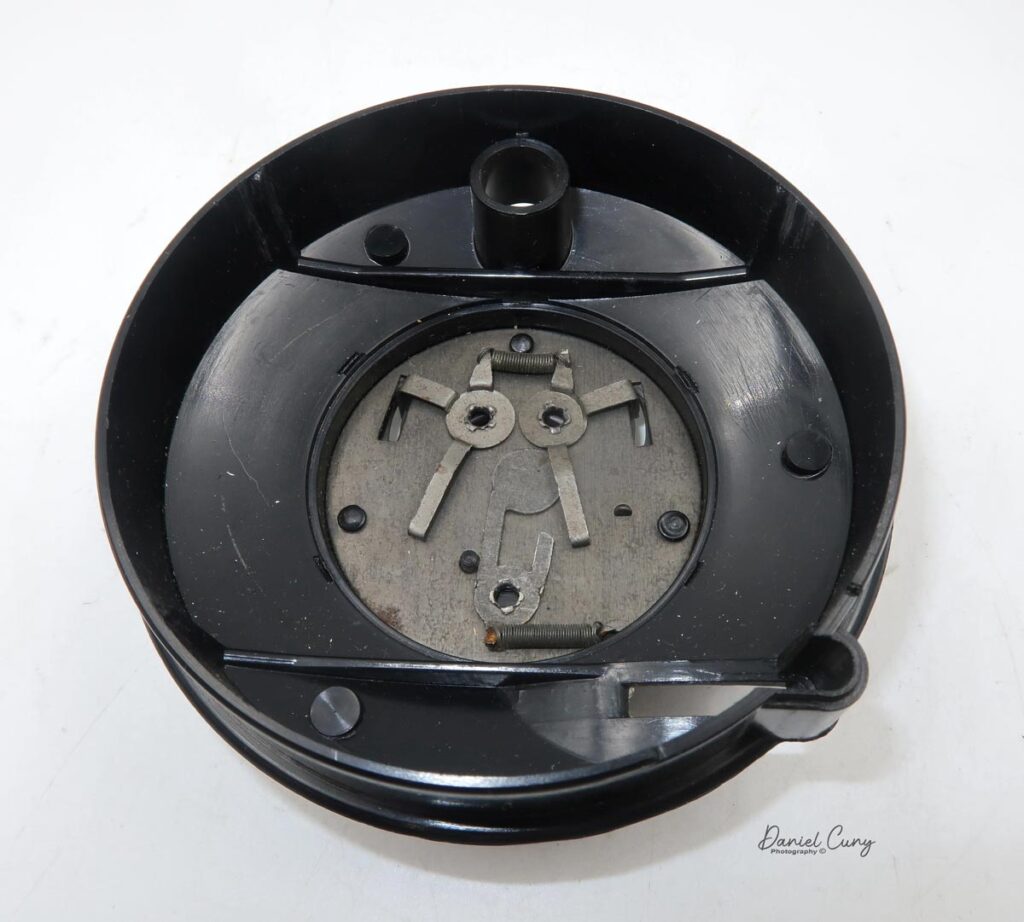
Here’s how the different shutter levers work. When you pull down the “T” lever, the shutter assembly arm slides over and pushes the lens cover away from the lens. Holding the shutter lever down keeps the lens open for the length of time you hold the lever down. When you pull the “S” lever down, it slides the shutter arm over the “short pin” arm and grabs the shutter cover assembly. When you release the “S” arm, the shutter arm pulls the lens cover away from the lens, and due to the short pin arm, it slides off, and the lens cover closes, making a short exposure somewhere in the 1/50 sec timeframe.
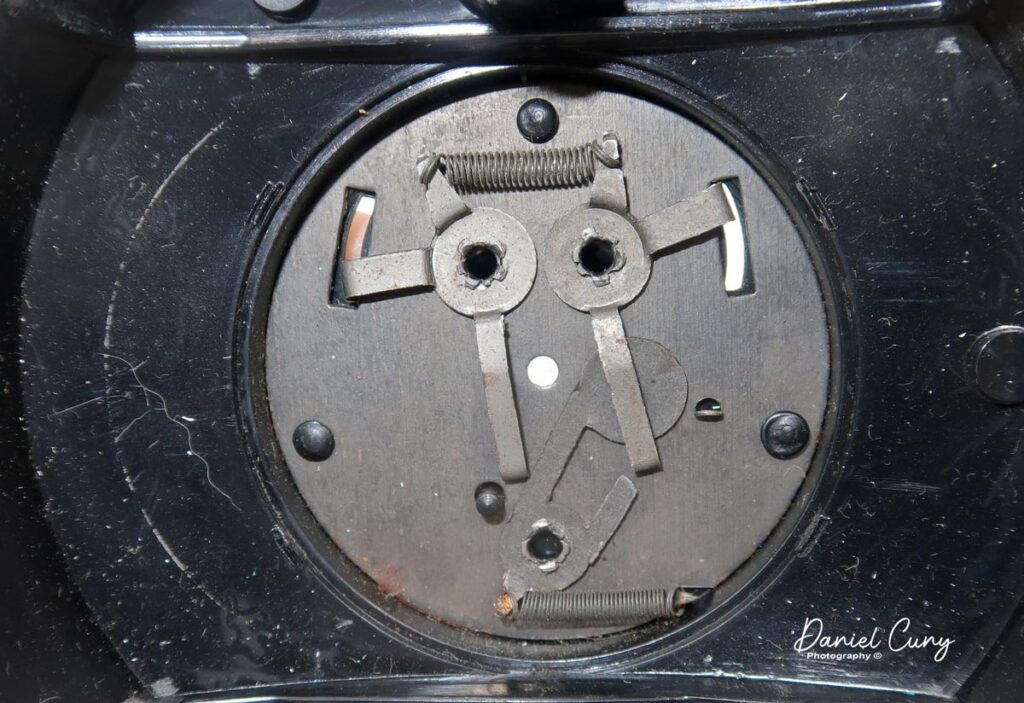
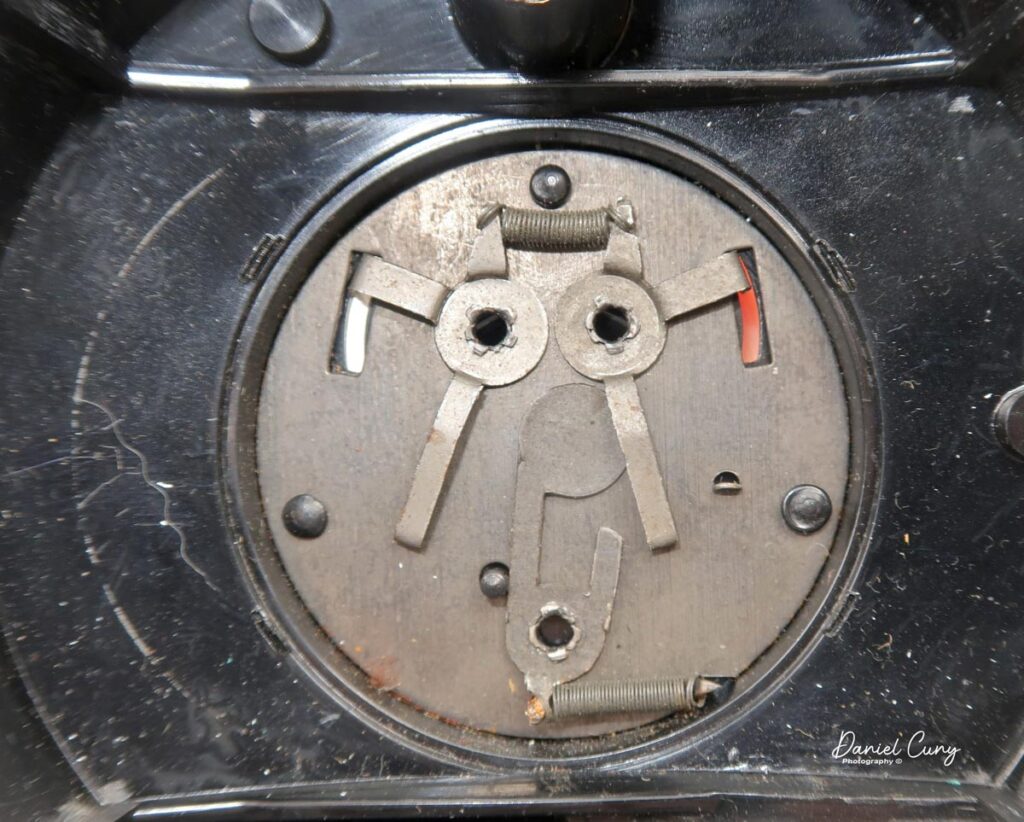
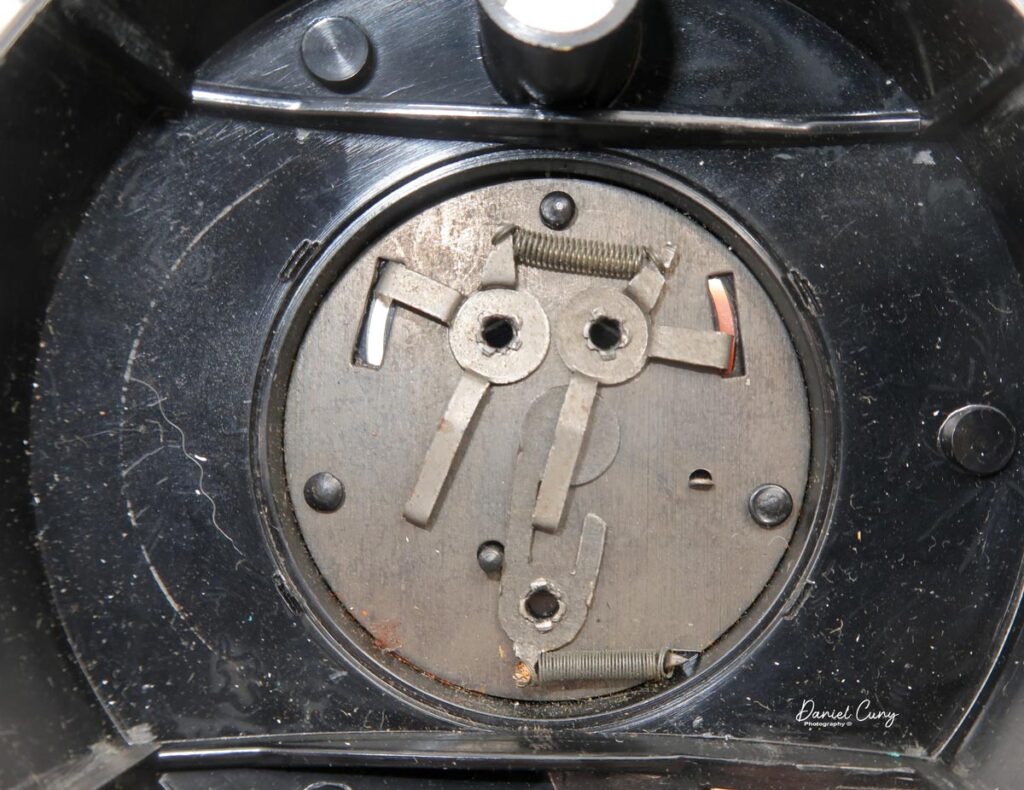
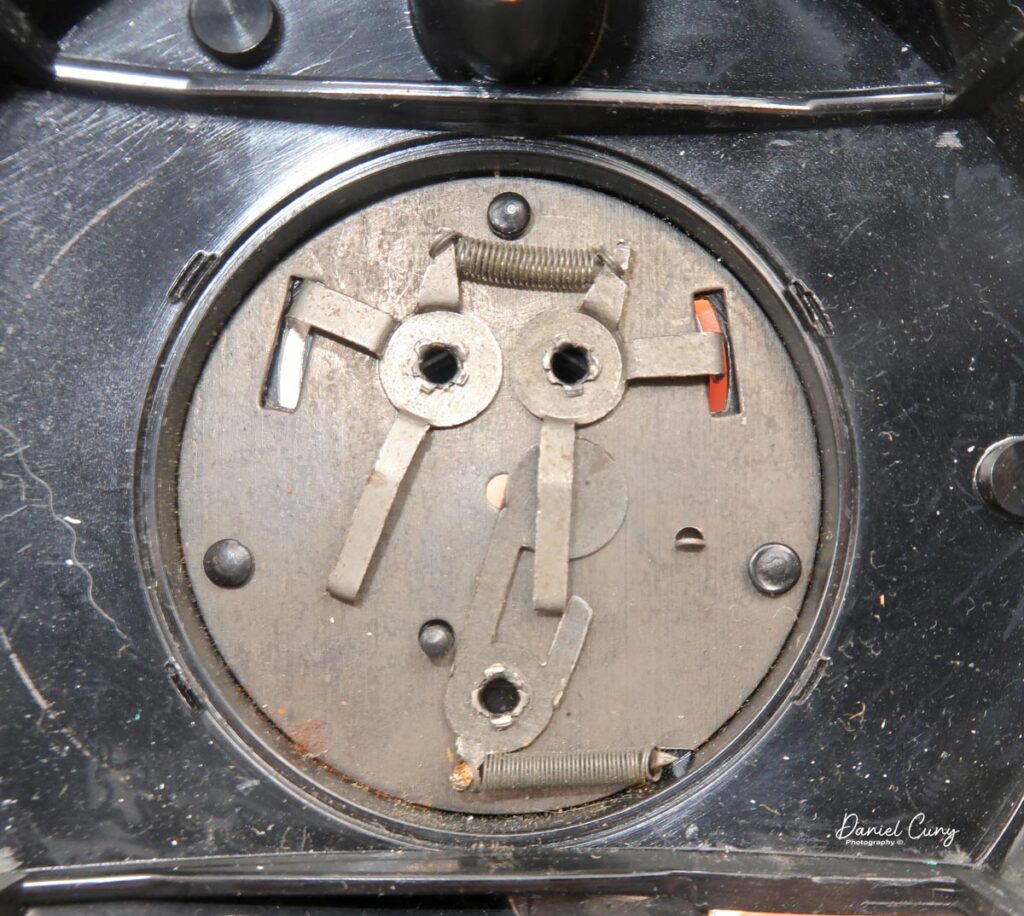
There is a round viewfinder on the top of the PIC camera, which doesn’t correspond to the shape or the distance you get within your photos. A friend from England sent me the instruction manual for the camera which you can see here.
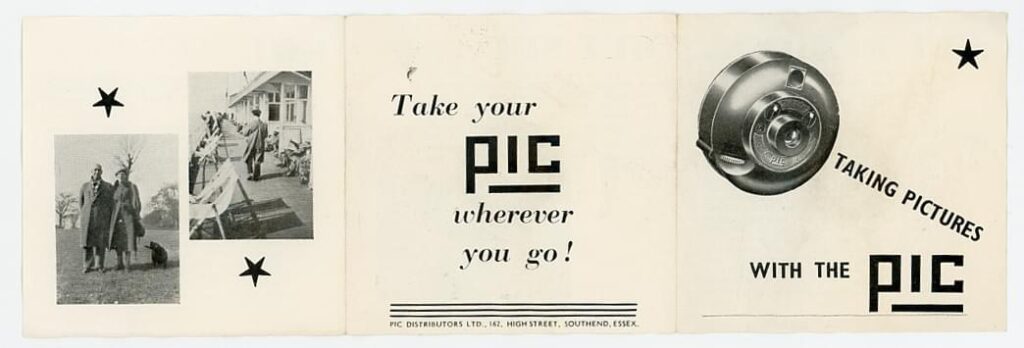
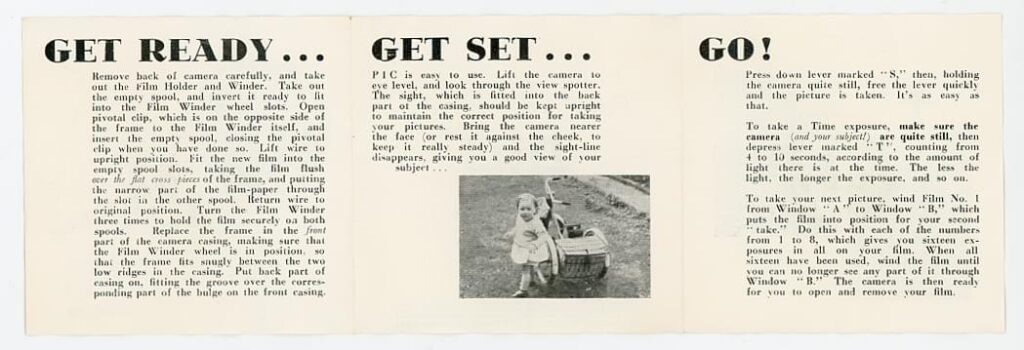
The Results:
I had some expired 127 film from Film for Classics, which I purchased just for these cameras to test out. I fixed the very basic shutter, replaced the metal disc covering the shutter assembly, loaded a roll of film into the camera, walked around my house, and took photos, and here are the results.
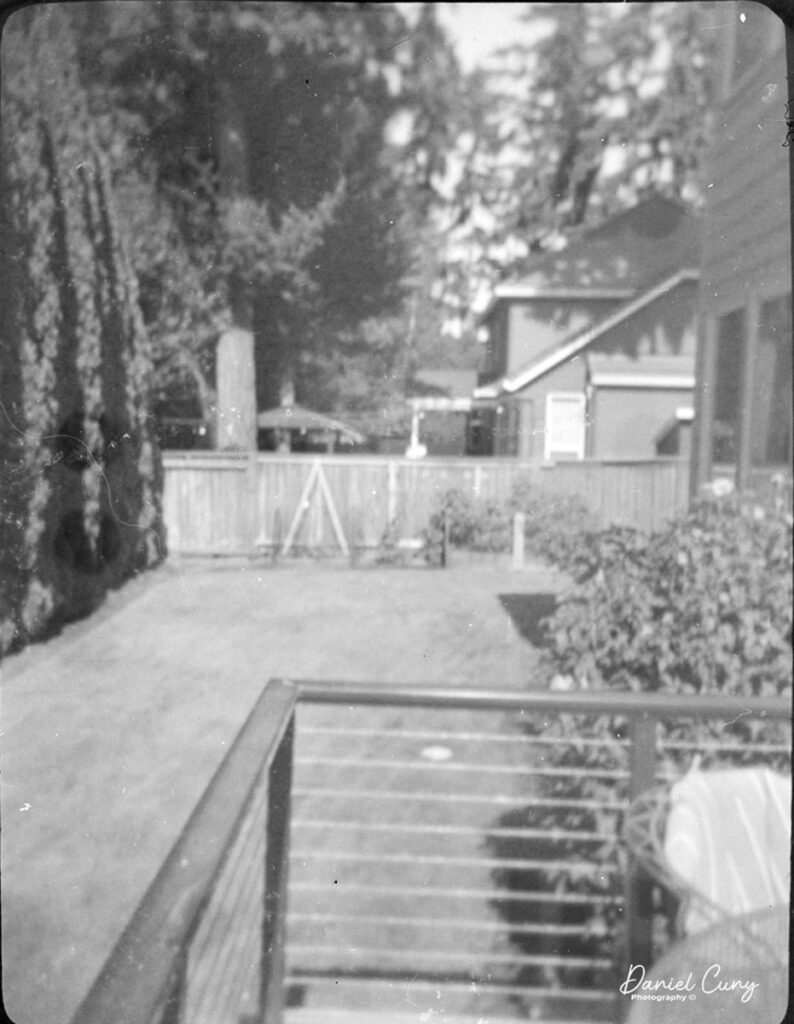
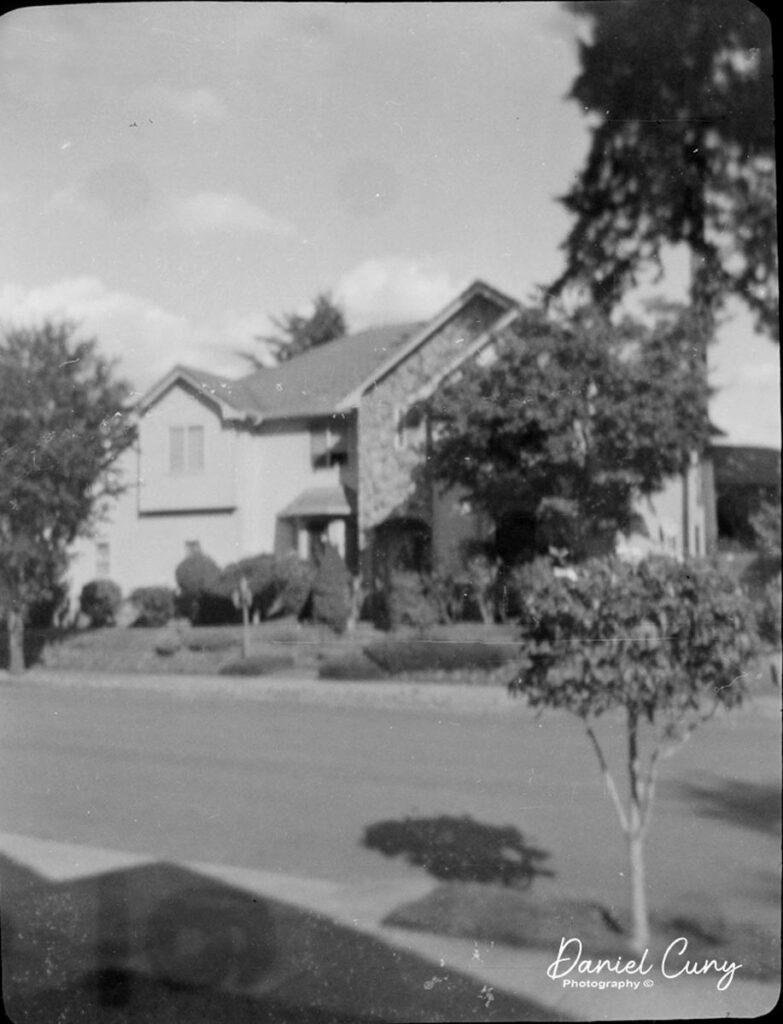
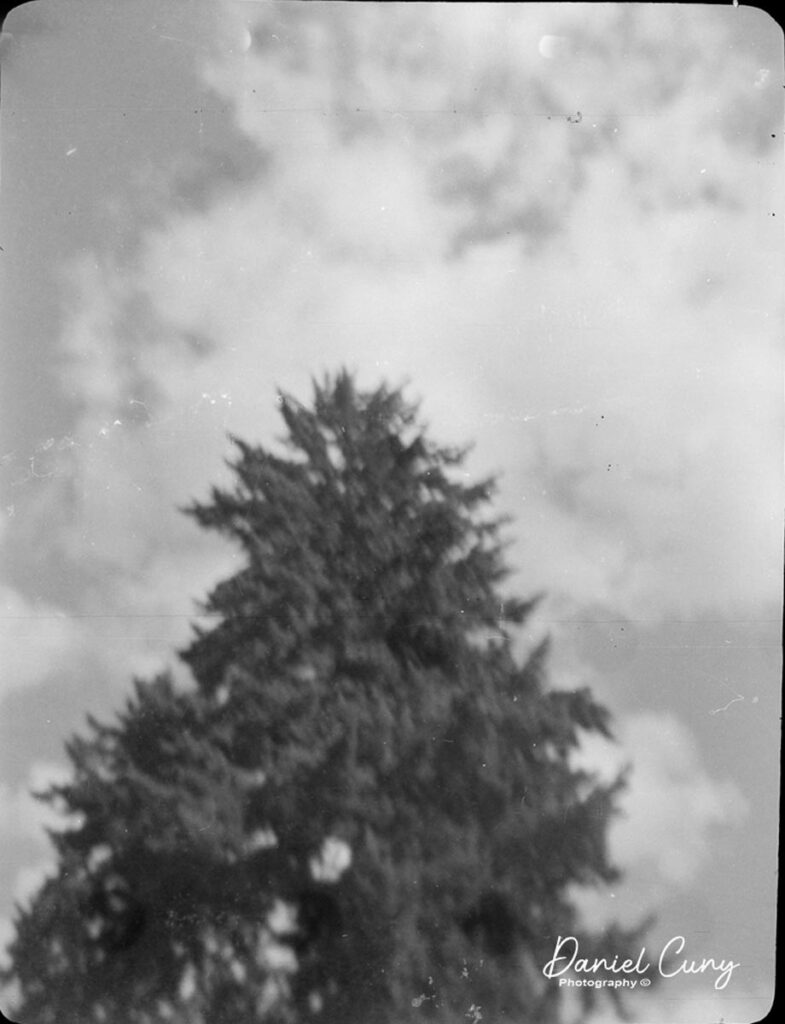
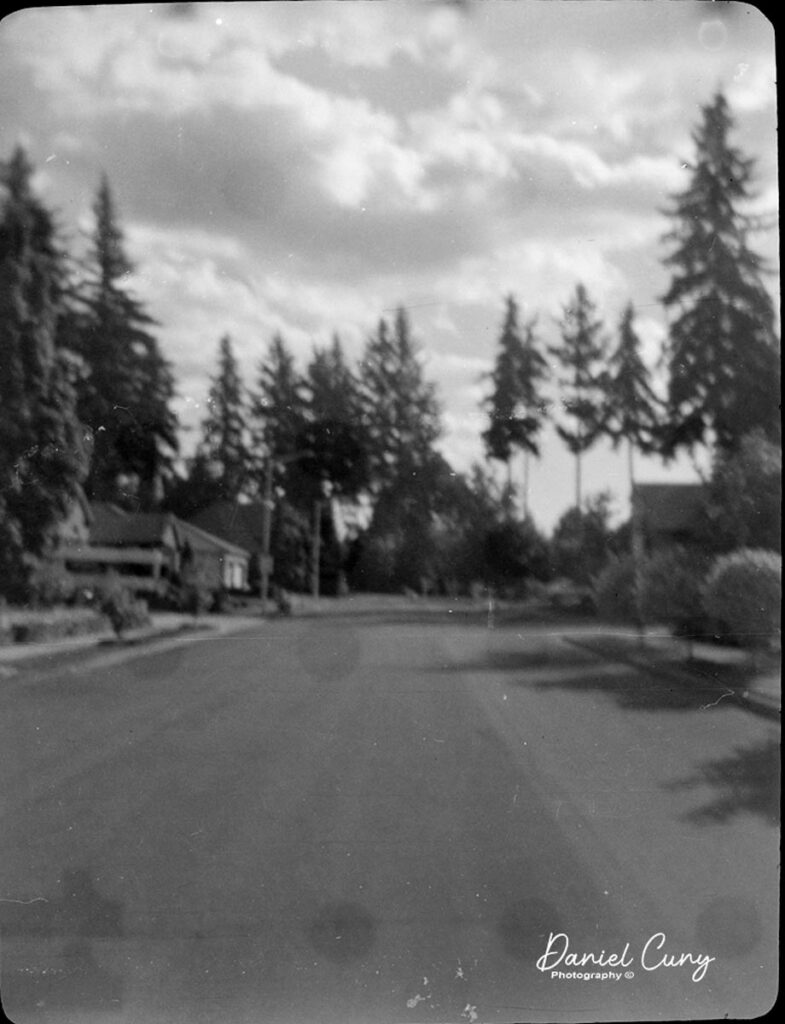
My conclusion
You can tell from the photos that the PIC camera lens isn’t very sharp. It has a very “Lomo” look to it. I didn’t get to photograph something close because I felt the plastic fixed focus lens wouldn’t produce tack-sharp images, but it did take pictures. It was easy to use, but I’d take nothing on holiday unless the photos I wanted to create were similar to a Diana or Holga style camera. Overall, the camera worked, and I found out that it’s relatively rare due to the plastic construction and short camera run. People ask for around $500.00 on eBay when you can find them. I’ll put it back in my collection and move on to a different camera next week.
Please comment on your thoughts on this or other cameras I’ve discussed. I’d love to hear your thoughts on this camera.
Share this post:
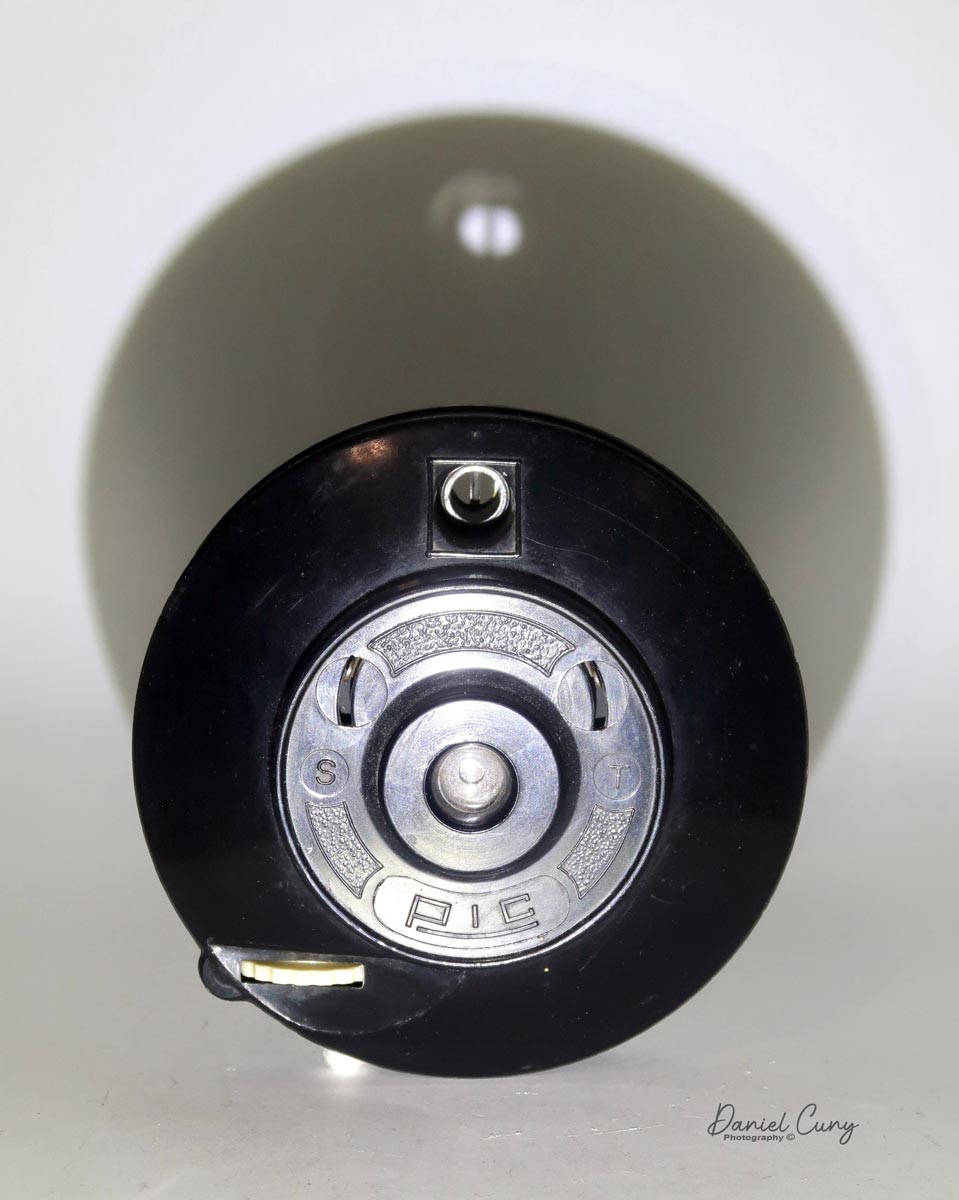
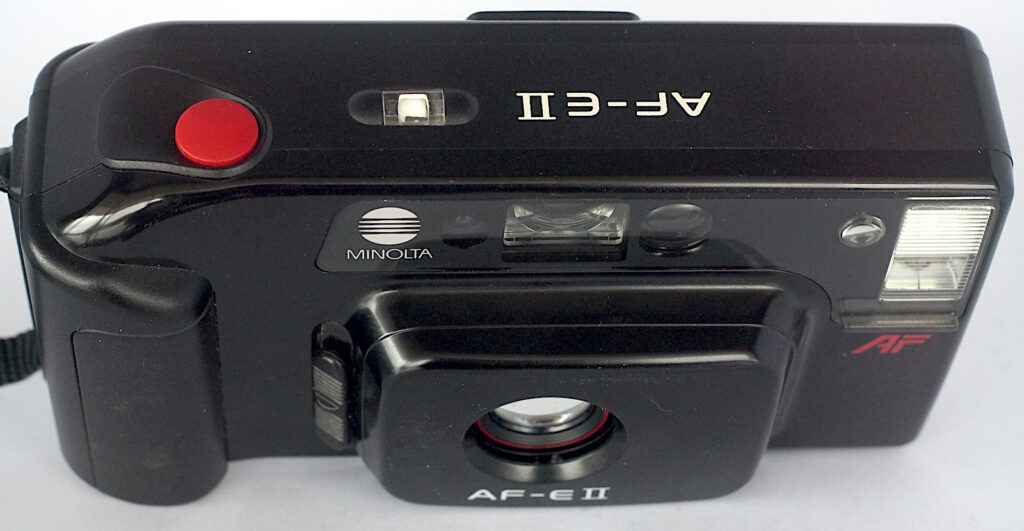
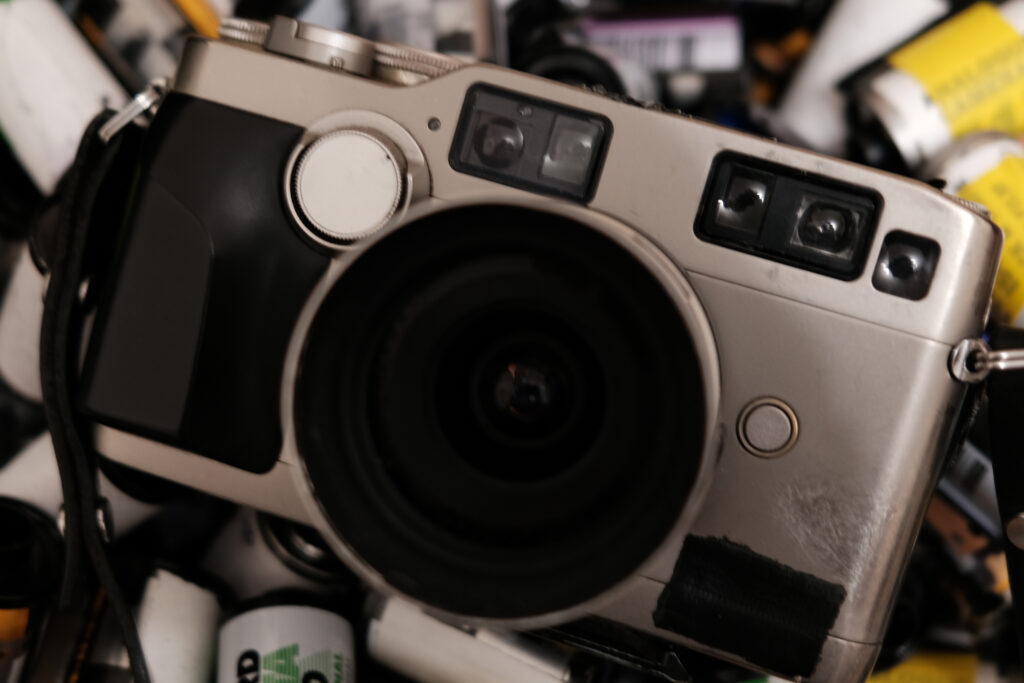
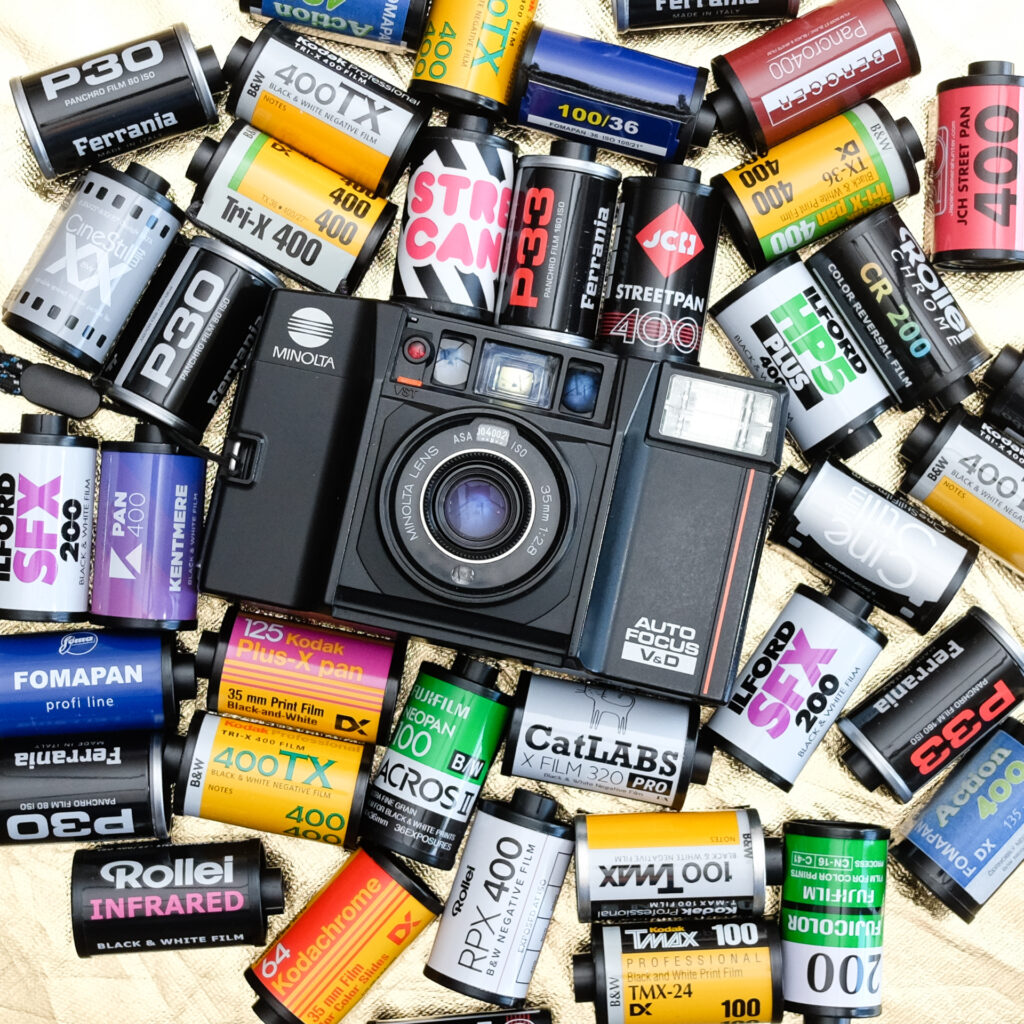





Comments
prur on PIC Camera – Having fun with the rare round British made oddity
Comment posted: 22/11/2024
Seeing the lever dial, I am wondering if the structure could be lightproof enough.
Comment posted: 22/11/2024
Jeffery Luhn on PIC Camera – Having fun with the rare round British made oddity
Comment posted: 22/11/2024
Comment posted: 22/11/2024
Ben Garcia on PIC Camera – Having fun with the rare round British made oddity
Comment posted: 22/11/2024
Comment posted: 22/11/2024